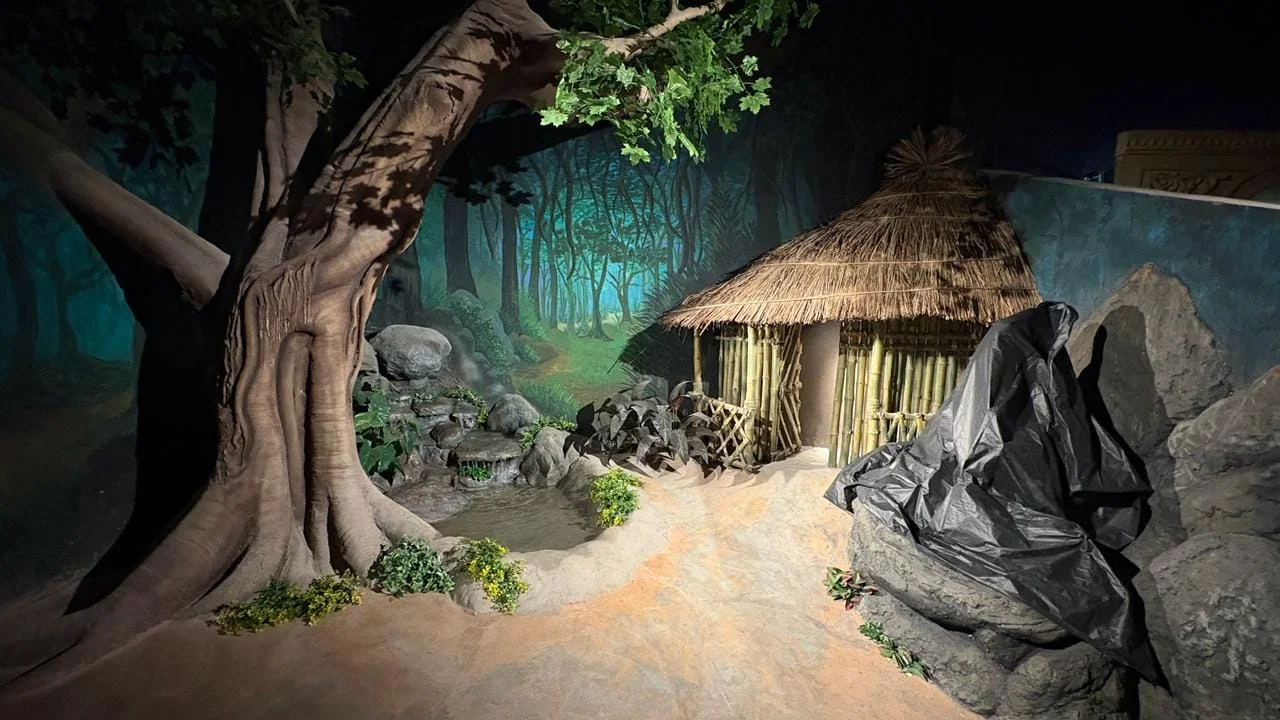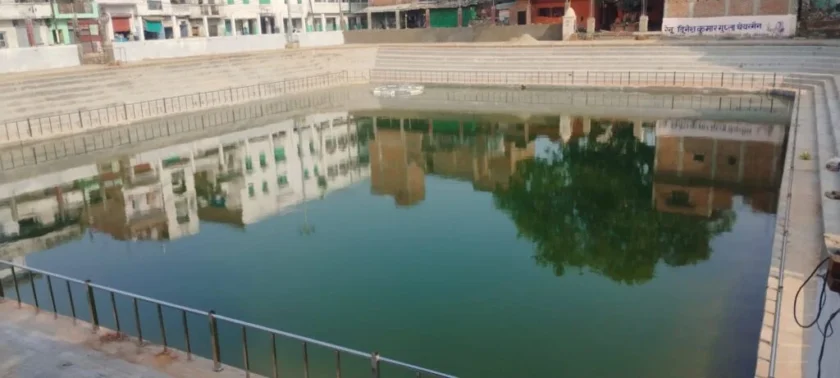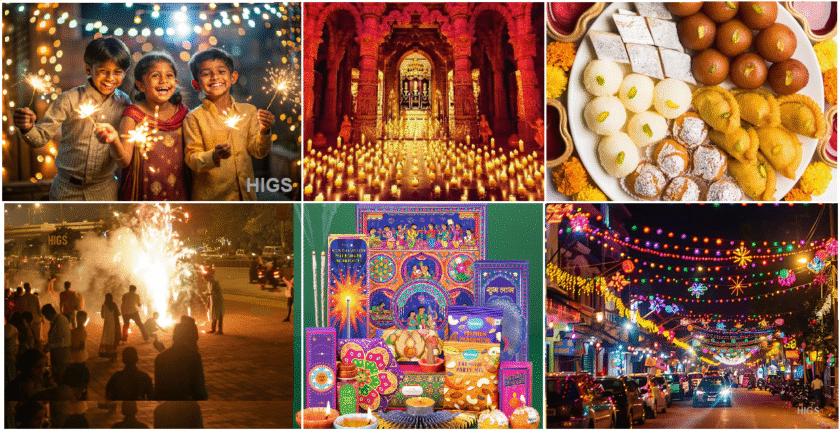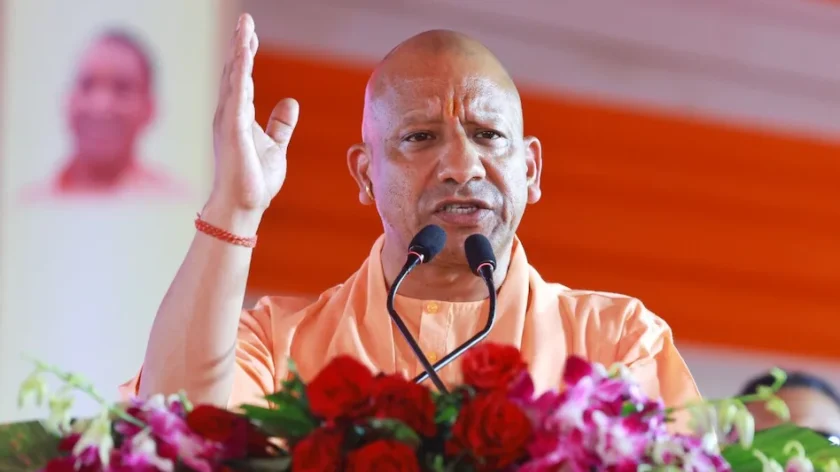Ayodhya: Following the monumental construction of the Ram Mandir, Ayodhya is poised to achieve another historic milestone with the inauguration of the world’s first Ramayana Wax Museum, a project envisioned under Chief Minister Yogi Adityanath’s leadership. The museum, located at Kaushiram Colony along the 14 Kos Parikrama route, will be inaugurated during the Diwali celebrations and is expected to become both a spiritual hub for devotees and a global tourist attraction.
Spanning 9,850 square feet, the two-story, fully air-conditioned museum has been built at a cost of ₹6 crore and showcases 50 lifelike wax statues of key Ramayana figures, including Shri Ram, Sita, Lakshman, Hanuman, Ravana, and Vibhishan. The ground floor features Ram Lalla’s childhood, Sita’s Swayamvar, and early episodes of the epic, while the first floor depicts Vanvas, Lanka Dahan, and the Ram-Ravana war. Advanced 3D lighting effects, melodious Ram Dhun, and immersive soundscapes allow visitors to experience the Treta Yuga, making the museum a unique blend of devotion, culture, and modern technology. Visitors can interact with the statues, take selfies with Ram Lalla’s childhood figure, and enjoy an authentic spiritual experience.
Built in South Indian architectural style, the museum combines traditional design with modern amenities. It accommodates 100 visitors at a time, features emergency exits and fire safety systems, and includes CCTV monitoring, a snack and coffee zone, and an entertainment area. The museum’s revenue will contribute 12% to the Ayodhya Municipal Corporation, aiding the city’s ongoing development.
Diwali-2025 Celebrations: A Fusion of Devotion, Culture, and Innovation
Ayodhya’s Diwali-2025 is not limited to the museum. Around 26 lakh clay lamps will illuminate 56 ghats, creating a breathtaking spectacle. A choreographed drone show using 1,100 indigenous drones will project key Ramayana scenes across the sky, complemented by a 3D holographic musical laser show. These technological marvels will display iconic episodes such as Ram’s victory, Hanuman carrying the Sanjeevani Mountain, the construction of Ram Setu, and the Ram Mandir itself, culminating in a tableau titled “From Treta Yuga to Modern Ayodhya”, symbolizing the city’s spiritual past and contemporary resurgence.
Over 2,000 artists, including around 500 from other states and 300 local performers, will participate in performances across 11 stages—one grand, three medium, and seven smaller stages—featuring traditional Awadhi, Bhojpuri, Braj, and folk music and dance, theatrical enactments of Ramayana episodes, and live cultural tableaux. Additionally, 22 grand processional tableaux with accompanying performers will parade through the city, offering visitors a multisensory cultural experience.

Empowering Rural Women through Eco-Friendly Initiatives
Aligned with the government’s focus on eco-friendly and community-driven celebrations, 25,000 clay lamps prepared by rural women from Lakhimpur Kheri’s self-help groups will be installed across Ayodhya. Made from local clay and cow dung, and infused with natural herbal fragrances, these lamps represent self-reliance, skill empowerment, and environmental consciousness. The lamps were ceremoniously handed over by Khand Vikas Adhikari Sandeep Kumar Tiwari to Mayor Mahant Girishpati Tripathi, and flagged off by Chief Development Officer Abhishek Kumar for installation across sacred sites.
A New Identity for Ayodhya
The Ramayana Wax Museum and the accompanying Diwali-2025 festivities are set to redefine Ayodhya’s identity as a world-class spiritual, cultural, and tourist destination. The combination of heritage, devotion, modern technology, and community participation underscores Chief Minister Yogi Adityanath’s vision of a city that celebrates faith, culture, and self-reliance, while empowering local communities, particularly women, through economic and social initiatives. With its unprecedented blend of spirituality, technology, and cultural diversity, Ayodhya is poised to attract millions of devotees and tourists annually, solidifying its status as India’s global pilgrimage and cultural hub.






